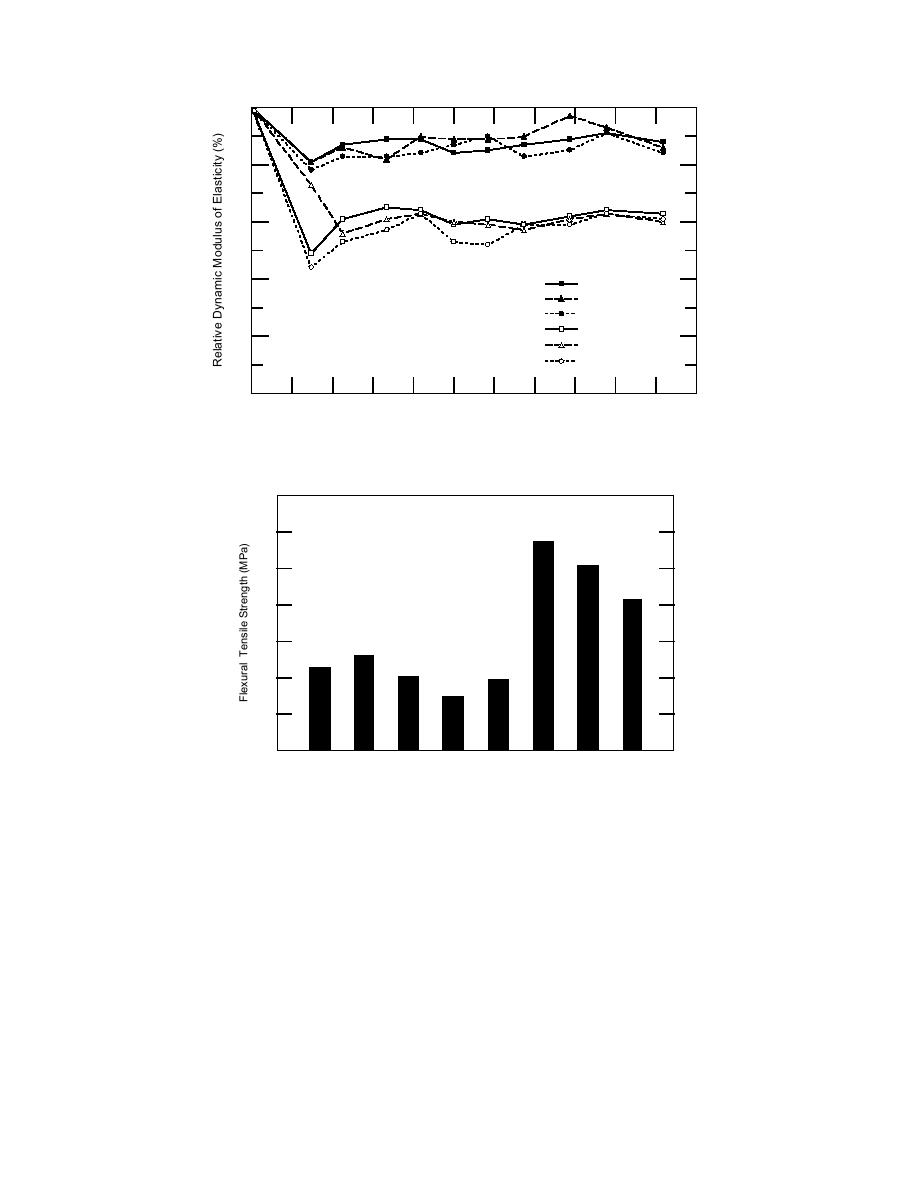
100
98
96
94
Control Beam 1
Control Beam 2
Control Beam 3
KC1 Beam 1
92
KC1 Beam 2
KC1 Beam 3
90
0
30
60
90
120
150
180
210
240
270
300
330
Number of Freeze-Thaw Cycles
Figure 14. Rapid freezethaw (ASTM C 666) test results for specimens with and
without KC1.
1.4
1.2
1.0
0.8
0.6
0.4
0.2
0.0
KC1
KC1
16%
10%
8%
6%
KC1
16%
5C 10C
Freeze Freeze Freeze
Freeze
No
No
Freeze
Freeze
Freeze Freeze
Figure 15. Joint test results of the experiments to assess the effect of KC1
on bond strength, and the effect of mortar moisture content at the time of
freezing on bond strength
one of the most important engineering properties
lar to concrete, these ASTM guides were used to
for unreinforced masonry. The bond strength
evaluate the mortar beams. Figure 14 shows the
tests were conducted according to ASTM C 1072,
test results. As can be seen, both mortars per-
commonly referred to as "the bond wrench test."
formed well. They had RDMEs at or above 96% at
The test specimens were assemblies of two solid
the end of the test. The differences in perform-
concrete bricks and one mortar joint. The masonry
ance were small enough that it can be concluded
assemblies were tested at an age of 28 days by
that the admixture KC1 did not have a significant
applying an eccentric compressive load to the
effect on the freezethaw durability of this mor-
assembly resulting in flexural tension across the
tar.
width of the mortar joint.
Effect of KC1 on bond strength
These tests evaluated the effect of the admix-
Bond strength of mortar to masonry units is
ture KC1 on bond strength. These tests and those
16



 Previous Page
Previous Page
